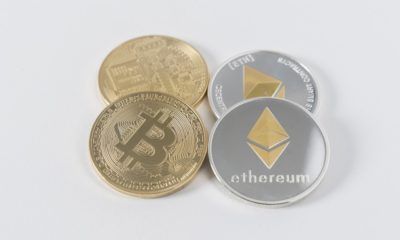Crypto
Why the TON Blockchain Was Offline for More Than 6 Hours
The TON blockchain experienced a six-hour outage due to an overload from a DOGS memecoin airdrop, causing a loss of consensus and halting transactions. Major exchanges like Binance suspended TON-related activities. The issue, compounded by Telegram founder Pavel Durov’s arrest, led to Toncoin’s value dropping 2.14%. The incident underscores the need for more robust blockchain solutions.

The TON blockchain, which is closely linked to the popular messaging service Telegram, recently experienced a massive outage that left the entire crypto community in uproar.
For a period of more than six hours, no transactions were processed, causing significant disruption to the network. In this blog post, we take a closer look at the events that led to this outage and the response to it.
The failure of TON blockchain: A look at the events
Around midnight on Tuesday night, (August 27th) the TON blockchain suddenly stopped producing new blocks. Tonscan, a blockchain monitoring tool, confirmed the shutdown and showed that no more transactions were being processed. This incident forced major crypto exchanges such as Binance and Bybit to temporarily suspend deposits and withdrawals via the TON blockchain.
The main reason for this sudden outage was an unusually high load on the network, which led to a loss of consensus. “The TON blockchain is currently experiencing a disruption in block production,” said an X-post from TON. The problem was caused by the overload of several validators who were unable to clean the database of old transactions. This caused the consensus on the network to be lost.
Causes and background
A key factor that led to the network becoming congested was an airdrop of the DOGS memecoin. This caused a huge increase in transaction volumes, overwhelming the network. X-user @maverickqe, who claims to be a strategic advisor to the TON Society, explained that many validators’ garbage collection became overloaded, which eventually led to the loss of consensus.
The DOGS memecoin had attracted a lot of attention in the crypto community, especially as the developers planned to expand the token’s utility within the Telegram ecosystem. On Monday, the airdrop of DOGS began, with 81.5% of the fixed supply of 550 billion tokens being distributed to community members. It was reported that six million verified users had requested the airdrop, which explains the high load on the network.
The reactions and consequences
As a result of the outage, the TON network called on validators to restart their nodes to restore consensus. The recovery was scheduled to begin at 6 a.m. on Wednesday. However, at around 6:39 a.m., the TON Status group on Telegram reported that not enough validators had yet restarted their nodes with the correct flags. The developers urged the remaining validators to update their nodes immediately to stabilize the network.
In addition to the technical issues, the situation was aggravated by the recent arrest of Telegram founder and CEO Pavel Durov by French authorities. This incident sparked a wave of outrage within the Telegram and TON communities. A Telegram mini-app launched a petition for Durov’s release, which has now collected nearly 1.7 million signatures.
Impact on Toncoin
The outage also had an immediate impact on the price of the TON blockchain’s native token, Toncoin. Within 24 hours, Toncoin’s value fell by 2.14% and was last trading at $5.27. This shows how sensitive the market is to technical issues within blockchains, especially when they are as prominent as the TON blockchain.
Conclusion
The six-hour outage of the TON blockchain has shown how vulnerable even large networks can be under unusually high load. The incident highlights the need for more robust solutions to deal with network congestion.
While the blockchain is now producing blocks again, the incident will certainly reverberate in the crypto community for a while and could lead to further discussions about the stability and security of blockchains.
__
(Featured image by Crystal Mapes via Unsplash)
DISCLAIMER: This article was written by a third party contributor and does not reflect the opinion of Born2Invest, its management, staff or its associates. Please review our disclaimer for more information.
This article may include forward-looking statements. These forward-looking statements generally are identified by the words “believe,” “project,” “estimate,” “become,” “plan,” “will,” and similar expressions. These forward-looking statements involve known and unknown risks as well as uncertainties, including those discussed in the following cautionary statements and elsewhere in this article and on this site. Although the Company may believe that its expectations are based on reasonable assumptions, the actual results that the Company may achieve may differ materially from any forward-looking statements, which reflect the opinions of the management of the Company only as of the date hereof. Additionally, please make sure to read these important disclosures.
First published in BLOCK-BUILDERS.DE. A third-party contributor translated and adapted the article from the original. In case of discrepancy, the original will prevail.
Although we made reasonable efforts to provide accurate translations, some parts may be incorrect. Born2Invest assumes no responsibility for errors, omissions or ambiguities in the translations provided on this website. Any person or entity relying on translated content does so at their own risk. Born2Invest is not responsible for losses caused by such reliance on the accuracy or reliability of translated information. If you wish to report an error or inaccuracy in the translation, we encourage you to contact us

-

 Impact Investing2 weeks ago
Impact Investing2 weeks agoHigh Awareness, Low Adoption: The VSME Challenge for European SMEs
-

 Crypto6 days ago
Crypto6 days agoBitcoin in 2025: Mainstream Momentum, Price Weakness, and a Pivotal Year Ahead
-

 Biotech2 weeks ago
Biotech2 weeks agoCAR-T Therapies: From Breakthrough Cancer Treatment to Faster, Safer, and More Accessible Immunotherapy
-

 Fintech6 days ago
Fintech6 days agoPakistan’s Digital Finance Paradox: Growth, Fraud, and the Fight for Trust





















